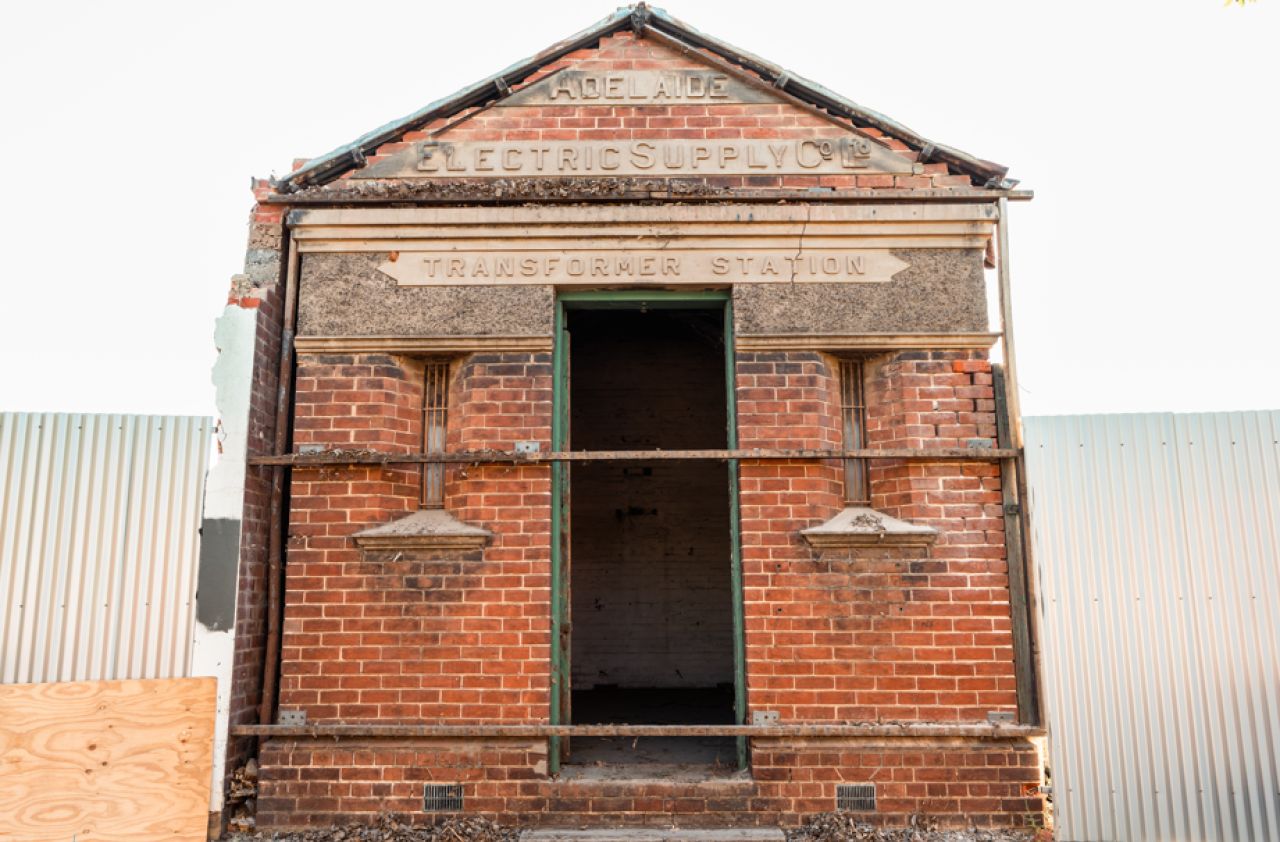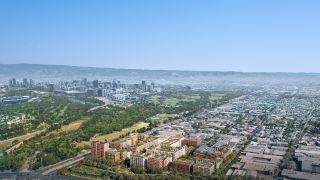A weathered turquoise doorframe leads to a whitewashed redbrick interior, meticulously preserved to reveal a distinct industrial charm.
Despite decades of dust and dirt, the building’s quirky features emerge immediately, even within its compact footprint.
There are sockets which were once home to girthy power cables and trace written words in black paint on white walls, labelling electrical inputs and outputs from the past. One says “Southwark Feeder”. Another “Wood St”.
It is an intriguing and absorbing snapshot into Adelaide’s past.
Earlier this year, this heritage-listed electrical transformer station built in the 1910s, which had remained cladded and undisturbed for years, was opened to reveal its interior.
The six-square-metre Adelaide Electric Supply Co Transformer Station on Holland Street, Thebarton, will be reimagined as part of Renewal SA’s $1 billion Southwark residential development.
The finely crafted red brick building was one of many pieces of electrical infrastructure built across Adelaide between 1910 and 1920 to support local industry development.
Upon its construction, the Holland Street transformer station enabled the growth in industrial development in the suburb of Southwark (later Thebarton), by regulating power distribution to the area.
Heritage South Australia describes it as a “small gable-roofed building with pebble-dash walls, constructed to house an electricity transformer”.
You can forgive the musty smell to imagine the aroma of coffee brewing, bagels baking or the fragrance of freshly cut flowers one day in this industrial nook, located on the far western side of the upcoming development.
The possibilities for adaptive reuse are boundless.
References to the transformer station in the site’s master plan suggest the building will be restored and showcased, forming a “threshold into a pedestrian laneway”.
Other historical landmarks around Adelaide from the early 1900s have been restored and reused in similar ways, although perhaps not landmarks of such petite stature.
The now bustling food and beverage hangout Electra House on King William Street was once the head office of Citizens’ Life Assurance Company (now MLC Life Insurance), built in 1901.
After a lifetime of different uses and 20 years spent derelict, the original building stands proud on King William Street, still boasting its original name atop its façade, despite its transformation into a chic city watering hole.
Then there’s the original Adelaide Electric Supply Company Power House on Grenfell Street.
Established in 1897 to supply electricity to the Adelaide area, it sent power through to the Thebarton transformer upon its construction a decade later. It ceased operations in 1925 but, after a period of dormancy and time as a Panorama TAFE school, the state heritage building became home to Tandanya in 1989, Australia’s National Aboriginal Cultural Institute.
Like the Thebarton Transformer Station and Electra House on King William Street, the red brick façade stands tall today with its original name at the peak.
Back to Southwark.
At the centre of the future development is the original brewhouse, which South Australian Heritage Council says was built in 1886 and underwent multiple redevelopments to increase its brewing capacity.
Not too far from the tower, historic foundations were unearthed during the demolition of the West End Brewery, uncovering Colonel Light’s cottage.
Believed to be the homestead of Colonel Light himself, footings have been preserved in line with advice provided by conservation specialists and archaeologists.
Together, these elements offer a fascinating glimpse into Adelaide’s colonial history and are set to take pride of place in the new Southwark Grounds.

